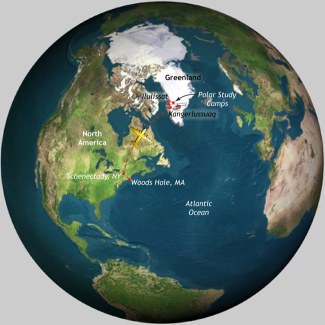Solstice
Science: It’s going to be the usual demonstration with the Earth as a tennis ball or marble and the Sun as a football or gym ball. You know the drill. The sun is at its most northern point from the equator. The most northern parts of the earth have their longest day – in the Arctic the sun never sets; the southernmost parts have their longest night – in the Antarctic the sun never appears.
Activities: Build a Stonehenge (or just visit it, if you’re near). Native Americans put teepees in a circle to symbolise the cosmos on the solstice – that might be fun too if you have a lot of spare bedsheets.
In Northern Europe, the Solstice is a big deal and a good excuse for a party.
Bonfires (and jumping over bonfires), visiting and decorating wishing wells, gathering herbs because they are especially potent.
Brazil’s Festa Junina involves a lot of dancing quadrilles; Sweden gets out a maypole (in June?); in medieval times the French celebrated with a cat-burning ritual; in Jersey they banged a brass pan to ward off evil, and we all know a tiny bairn who would enjoy doing that.
Hunting for magic fern blossom; washing the face with morning dew to be beautiful all year; making flower wreaths and throwing them on lakes; balancing an egg at the exact moment of the solstice … oh, there are lots more ideas here and here.
Greenland National Day:
Greenland began as a Paleo-Eskimo community around 2500 B.C. The Thule culture came from Alaska around 1000 A.D., bringing innovations like dog sleds and new kinds of whale harpoon.
From 986 A.D. Greenland was settled by Icelanders and Norwegians after Erik the Red led 14 boats of settlers there (his dad had been exiled from Norway for manslaughter, and he’d been exiled from Iceland for some other killings. Nice family.).
In the 13th century the Norse Greenlanders submitted to Norway’s rule, and when Norway and Denmark became the Kalmar Union, so did Greenland.
In the 15th century the Little Ice Age seems to have killed off the Norse settlements, but in 800-1300 it was fairly warm – they could even farm barley.
In 1500 the Portuguese Gaspar Corte-Real came to try and find a new route to Asia. He didn’t find one but Greenland appeared on the Cartino Planisphere – people had kind of forgotten Greenland’s existence for a bit before then.
In 1605 King Christian IV of Denmark sent explorers to find the lost Norse settlers and claim Greenland for Denmark, but there was too much ice for them to get anywhere. Inuits took over again, but Denmark still claimed sovereignty.
In 1931 Norway claimed the uninhabited east Greenland as Erik the Red’s Land, but the rest of the world said no.
In 1940 Denmark was occupied by Nazi Germany and in 1941 America invaded Greenland to ‘protect’ it.
In 1950 Greenland decided to be a welfare state with Denmark as a sponsor, granting them 3.2 billion kroner a year. In return Denmark tried to de-Greenlandify Greenland, making their official language Danish and making all children do at least post-secondary education in Denmark – many ended up in boarding schools. They changed Greenlanders into urbanised workers rather than subsistence hunters but also made them want their independence more.
In 1985 Greenland left the European Economic Community cos they like fishing a lot and killing seals, and the EEC said no.
Because of its history, Greenland is considered part of Europe, but you can see it’s really part of North America. If the Greenland ice sheet melted, the world’s seas would rise by 7 metres.
Other events today:
- Go Skateboarding Day
- International Surfing Day
- National Aboriginal Day (Canada celebrates the Inuit and Métis and First Nations)
- We Tripantu (Mapuche New Year, Chile)
- Bolivian New Year
- World Music Day
- Schoelcher Day: The French West Indies/Antilles honour the French abolitionist’s Victor Schoelcher’s achievements in helping end slavery with a sailboat race, fireworks, music, etc.
- Togo Day of the Martyrs: Togo gained independence from France in 1960. They have mainly animistic beliefs, carve beautiful statuettes (Google Ewe or ibeji) and make beautiful batiks, which could be fun to do.




